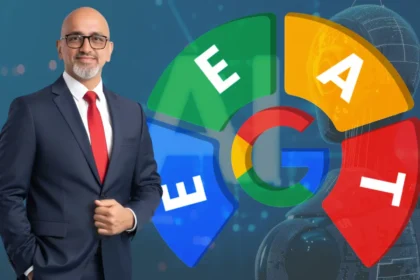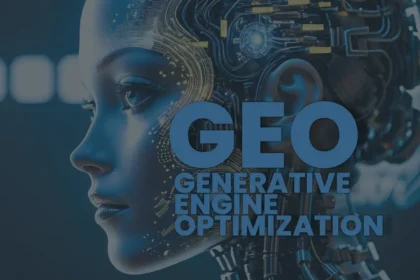In today’s data-driven world, where every click, scroll, and purchase is tracked, it’s easy to forget that behind every metric is a human being. While analytics reveal behaviors, they often miss what truly drives customer decisions: emotions. That’s where emotional intelligence in marketing comes into play. In 2025, businesses are learning that long-term success hinges not only on conversion rates but also on connection—emotional connection.
“Marketing without emotional intelligence is like speaking without listening.”
What Is Emotional Intelligence in Marketing?
Emotional intelligence (EQ) is the ability to understand, use, and manage emotions—your own and others’. When applied to marketing, EQ helps brands perceive customer needs, empathize with pain points, and craft messages that resonate emotionally, not just rationally.
Key components of EQ in marketing include:
- Empathy: Understanding your audience’s feelings and perspectives.
- Self-awareness: Recognizing how your brand’s message might be received.
- Social skills: Building meaningful engagement and rapport.
- Emotional regulation: Managing your brand’s tone, especially during crises.
Why Emotional Intelligence Matters More in 2025
With AI, automation, and big data dominating modern marketing, the human touch has become the ultimate differentiator. Audiences are bombarded with impersonal, algorithmically generated content every day. They crave authenticity, empathy, and emotional resonance.
Here’s why EQ is now a critical skill for marketers:
- Customers expect personalized experiences. Emotional intelligence allows brands to tailor messaging to specific emotional states and needs.
- Trust is fragile. A single tone-deaf campaign can lead to widespread backlash, especially on social media.
- The competition is fierce. Emotional storytelling can be a key driver in brand preference.
- AI is everywhere. But people still connect with other people, not just machines.
The Business Case: How EQ Drives ROI
When done right, emotional marketing boosts loyalty, brand recall, and customer satisfaction, fostering long-term success. Studies show that emotionally connected customers are more than twice as valuable as highly satisfied customers. They’re more likely to:
- Recommend your brand
- Purchase more frequently
- Stay loyal longer
- Forgive occasional mistakes
In short, emotional intelligence in marketing leads to deeper connections and measurable business growth.
A Harvard Business Review study found that emotionally connected customers have a high lifetime value, spending an average of $468 a year in the category, versus $235 for other customers. – HBR
Real-World Examples of EQ in Action
1. Nike – Empowerment Through Storytelling
Nike’s “You Can’t Stop Us” campaign connected with audiences by showcasing perseverance and unity during global hardship. The campaign didn’t just sell shoes—it inspired hope, driving emotional engagement and brand loyalty.
2. Spotify – Personalized Year in Review
Spotify’s “Wrapped” campaign taps into personal memories and identity, giving users emotional ownership over their music habits. It’s emotional marketing disguised as data-driven content.
3. Coca-Cola – Share a Coke
By printing names on bottles, Coca-Cola made their product feel personal. Customers shared photos and stories, spreading the campaign organically across social media.
How to Apply Emotional Intelligence in Your Marketing
1. Build Audience Personas With Emotions in Mind
Go beyond demographics. Understand your audience’s motivations, fears, hopes, and emotional triggers.
2. Listen Actively Through Social Media and Feedback
EQ begins with listening. Monitor comments, reviews, and conversations—not just for complaints, but for emotional cues.
3. Train Your Team on Empathetic Communication
From customer service reps to copywriters, everyone should know how to read the room and respond with empathy.
4. Craft Emotionally Rich Stories
Storytelling is at the heart of emotional marketing. Share real customer stories, behind-the-scenes struggles, and purpose-driven initiatives.
5. Use Emotionally Intelligent Automation
Yes, even your AI can be emotionally smart. Use sentiment analysis to adapt responses and avoid robotic tone in chatbots or emails.
6. Be Authentic in Times of Crisis
EQ shines brightest during difficult times. Admit faults, show empathy, and offer genuine help—don’t spin.
Metrics That Reflect Emotional Intelligence
Traditional KPIs don’t always reveal emotional connection. Consider these EQ-aligned metrics:
- Customer sentiment scores
- Emotional engagement (comments, shares, reactions)
- Brand trust surveys
- Referral and loyalty rates
- Social listening data trends
The Future: AI and EQ Working Together
The irony? Technology is now helping brands become more emotionally intelligent. Tools that track sentiment, tone, and emotional triggers in real-time are enabling hyper-empathic marketing. In 2025, the smartest marketers aren’t choosing between data and emotion—they’re blending both for maximum impact.
“Your brand’s emotional intelligence will soon be your most valuable marketing asset.”
Final Thoughts
Emotional intelligence in marketing isn’t a “nice to have.” It’s a core competency for modern businesses. As consumers grow more conscious, skeptical, and emotionally aware, brands must meet them at that level—not with louder ads, but with genuine human connection.
If your marketing feels flat or forgettable, it may be time to check your EQ.
Ready to Humanize Your Brand?
At DzynBuzz, we specialize in emotion-driven marketing strategies that go beyond algorithms and speak to the heart of your audience.













